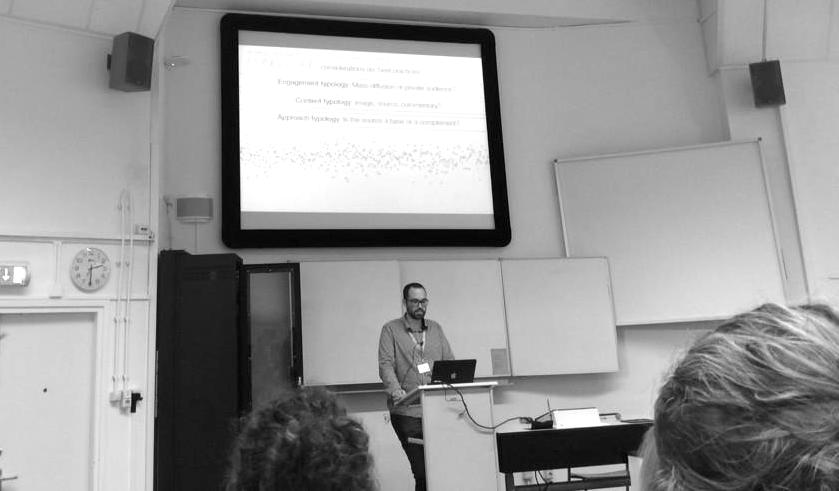
“Source criticism in 140 characters: Rewriting history on social networks“. Paper presented at the International Federation for Public History Conference (University of Amsterdam, 24.10.2014).
[button size="medium" color="gray" style="none" new_window="true" link="https://www.academia.edu/8936352/Source_criticism_in_140_characters_rewriting_history_on_social_networks"]Slides on Academia[/button]
[button size="medium" color="gray" style="none" new_window="true" link="https://www.researchgate.net/publication/267326396_Source_criticism_in_140_characters_Rewriting_history_on_social_networks"]Slides on ResearchGate[/button]
Picture @FienDanniau
What is the role of historians on Twitter? To share historical content on social media has become common, exacerbated this year by the commemorations of the First World War. But strategy and rigor (and therefore the quality of cultural mediation) are highly variable.
The analysis proposed here offers some remarks on “best practices”, developed in three typologies:
- Engagement typology: a measure is already a classification
- Content typology: what do we put in a tweet?
- Approach typology: document-based or storytelling?
[hr] 1. ENGAGEMENT TYPOLOGY: A measure is already a classification
To measure the influence or success of an « historical » Twitter account is an important element: More subscribers does not mean more engagement of these followers. It’s also obvious that the engagement of these followers is not a guarantee of quality. However, it is important to know what we are talking about, to cope with these impressive numbers, in order to understand what they are saying about the expectations of the public.
One way to measure public participation on Twitter is to count the number of retweets and favorites of a tweet. On these first graphs (fig.1 and fig.2), we compare the success of tweets of a few twitter accounts during september. The vertical axis shows the number of retweets and favorites for each tweet. The scale is logarithmic because of the very large differences between the studied accounts. Before analyzing four “historical” accounts, we choose to display the engagement of Barack Obama and Katy Perry as benchmarks (fig.1).
The four “historical” accounts have been chosen in order to show the different type of audiences en engagement (fig.2). UK War Cabinet tweets links to the World War II original Cabinet Papers, from the National Archives. Followed by 13.000 users, this account is only slightly retweeted or favorited. We may discuss later possible explanations, particularly related to the nature of the documents and the tweets austerity.
Followed by 20.000 people, the tweets of GallicaBNF are retweeted and favorited between 10 and 50 times each. Moreover, we observe that this account tweets only during the week, leaving empty spaces during the weekends. The National Library is showcasing its digital collections, allowing himself a lot of fantasy. Very interactive, it answers questions from users. It often retweet documents posted by researchers and curious (those retweets are not displayed here). Real Time WW2 is the initiative that popularized the approach. Created by Alwyn Collinson, this Twitter account follows the developments of the Second World War (72 years after). Followed by 300.000 people, his tweets receive between 80 and 500 retweets and favorites each. The nature of his tweets is always very factual. The History In Pics account tweets archives pictures at very high frequency (see the density of tweets). Retweeted and favorited by 1.000 to 4.000 users, his tweets are always built on the wonder at an exceptional document. This account, and the many others who follow the same vocation, are mass phenomena that historians should not neglect. Created by two teenagers, this account is part of a nebula of Twitter accounts publishing day after day the “best pictures” of… almost everything… Along with these twitter accounts, one of the two creators runs a successful social media marketing start-up. We understand very well that playing with audiences of several million users can be very interesting when it comes to monetization! This is obviously not our purpose here to go further in the investigation, but it shows how the historian must take up this issue.
If we summarize, we see very different audiences. Below the graph (fig.3) are shown the values of the box plots.
That said, to further analyze how content quality influences the amount of interest, we must weight this engagement to the subscriber base of twitter accounts.
As their number of followers is quite comparable, the tweets from Katy Perry (8 times more engaging than Barack Obama) gives her a much higher ratio than that of the president of the United states (fig.4). But this ratio is much lower for Katy Perry than for the Historyinpics account, and GallicaBnF.
It is noted here that the two accounts that focus on the images have a significantly higher engagement rate than others. One thing that rejoins all the analyzes carried out by Twitter itself.
The nature of this engagement can also be analyzed (fig.5). We note that, among more «hand-made » accounts, the proportion of retweets compared to favourites is greater than in the most followed accounts. More specialized and focused on sources, the followers of these accounts more often share the content with their own followers.
[hr] 2. CONTENT TYPOLOGY: What do we put in a tweet?
A tweet can be composed of three elements (fig.6):
- The presence or absence of an image. We have seen that the image is a trigger element for popularity. [Example: RealTimeWW1]
- The presence or absence of a personal or critical comment. It’s the added-value of the tweet, which make it interesting in itself, not only because of the interest of the document, picture or text included. [Example: Erik Kwakkel]
- Last but not the least, definitively, the third element that compose a tweet is the presence (or not) of the source of the information [Example: GallicaBNF]. This seems obvious to historians – but this is not the case for everyone – information is not credible if the public can not have access to the source, or at least its reference [Examples of counterattacks: A.History and HistoryInPicsCredits].
The problem is not so much to avoid false documents than to avoid misinterpretation. Today in the war of « news images » on social medias, it often happens that images are taken out of context or cut. Misuse and abuse are less likely to occur in the “historical” community, but unintentional errors quickly happens.
Sometimes, the source is not present in the tweet itself but on a different support (example: JesuitHistory). It’s the case for this Arab Israeli War account. But does two or three blog posts per month really allow the reader to return to the precise source of the citations? In such cases, it’s difficult for the historian to create a timeline that breaks free of the suspicion of rewriting history.
[hr] 3. APPROACH TYPOLOGY: document-based or storytelling?
We distinguish two types of approaches:
- Some use documents to talk about a SUBJECT:
« I want to share an information and I use a source to do it » Many twitter accounts seek to unite the public around a theme, local, global, specific or broad [Examples: Culinary Historians and Radical History]. Some specialize in accounts that immerse their followers in the vertigo of time. This is the case of timelines « 100 years ago » or « What happened on this day in year …»[Example: World History 101].
- Some base their communication on a DOCUMENT
« I have a source and I share it » As seen previously, the best placed to share documents are those holding or consulting them: Institutions and scholars. But the accounts that automate the sharing of pictures and quotes at a high scale are also part of this category that use large directories of historical sources without storytelling between two tweets [Example: Memorable].
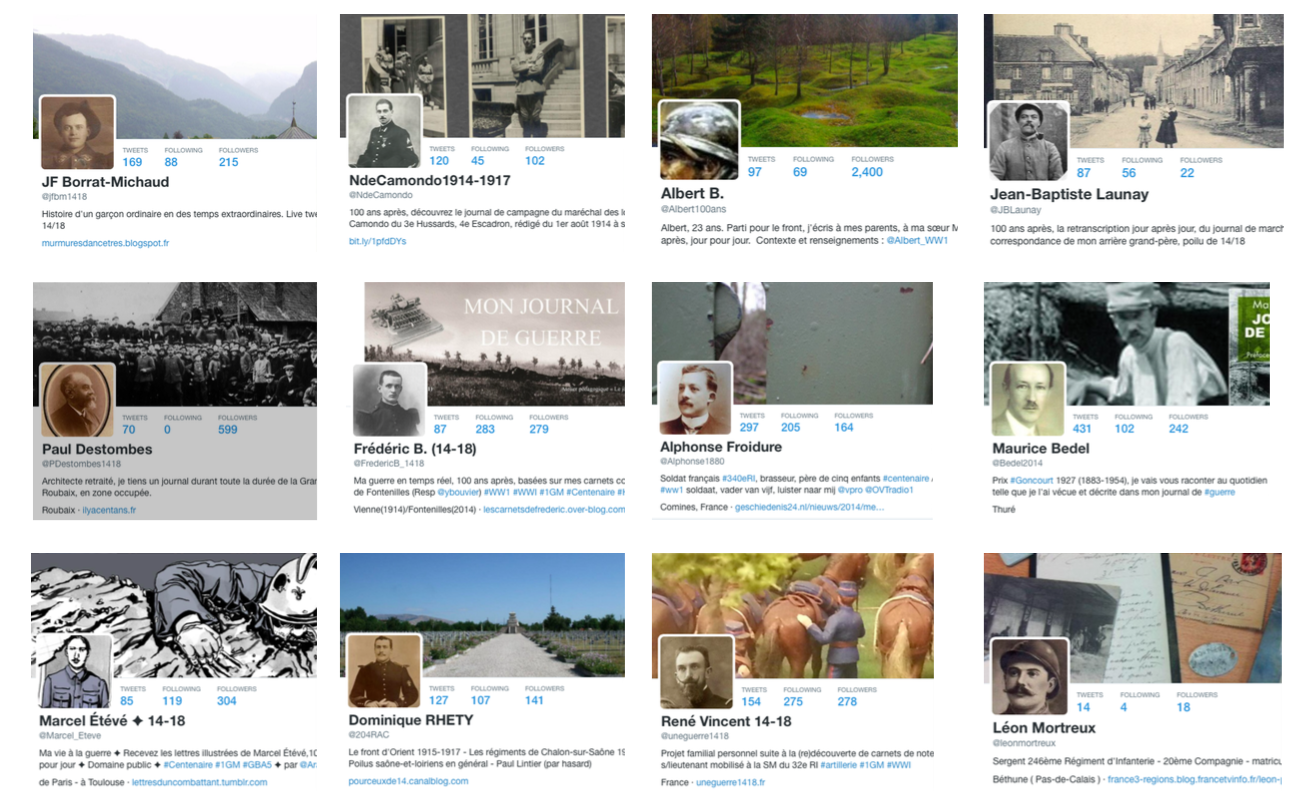
Since the beginning of the First World War commemorations, many Twitter accounts of french soldiers emerged.
And finally, one of the approach category the most represented: the event experienced in « real time ». We distinguish first and third person perspectives because they implies quite different uses, and use different sources. This “event” group straddles both approaches “from the source” and “with sources”: it is possible to describe an event from a single source such as a diary as through a corpus of newspapers. It is also the only group in which we found a significant amount of twitter accounts that engages in fictional history [Examples: Cry for Byzantium and Titanic Voyage].
Note that this distinction between central and peripheral use of historical source highlights the contours of the historical professions. The archivist on one hand, who values its collections. The historian on the other, who use a source from time to time according to a principle of curation that makes its individuality, having the responsibility for selecting the documents.
CONCLUSION
What can we propose to historians today? Trying to reach the influence of Katy Perry? Trying to become professional communicators? Or just people who can do their job by taking advantage of the changes that social media imply today?
We don’t want to build this typology as a tool that should be used by colleagues who want to start such a project. But it’s an interesting starting point for a reflection. A few clues on a field in which it is sometimes enough to plunge personally to understand its functioning and issues. Facing the vast diversity – and success that should not be underestimated – of the sharing of historical content on Twitter, we can only encourage historians to highlight their specificities: scientific rigor, critical thinking, and why not humor?
Aknowledgments: My thanks to Yannick Rochat (@yrochat / yro.ch) for the help in the data retrieval.
Note: Here’s a list – obviously incomplete – of “historical” Twitter accounts. Warning, it contains the best and the worst.

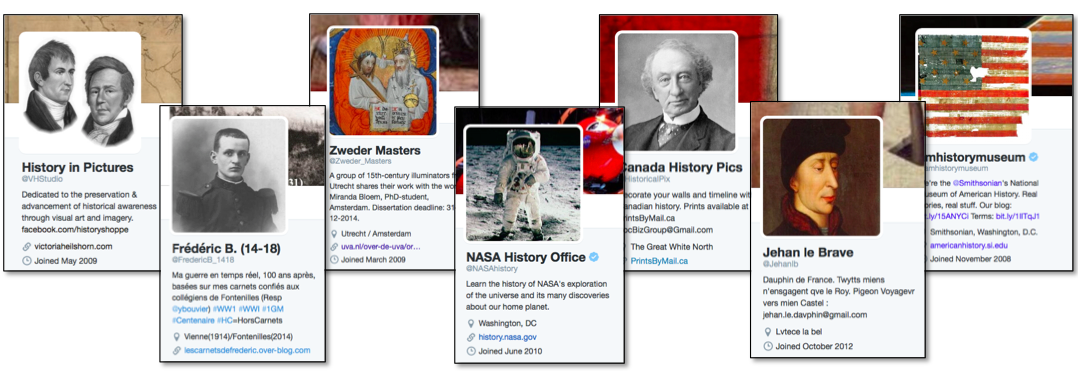
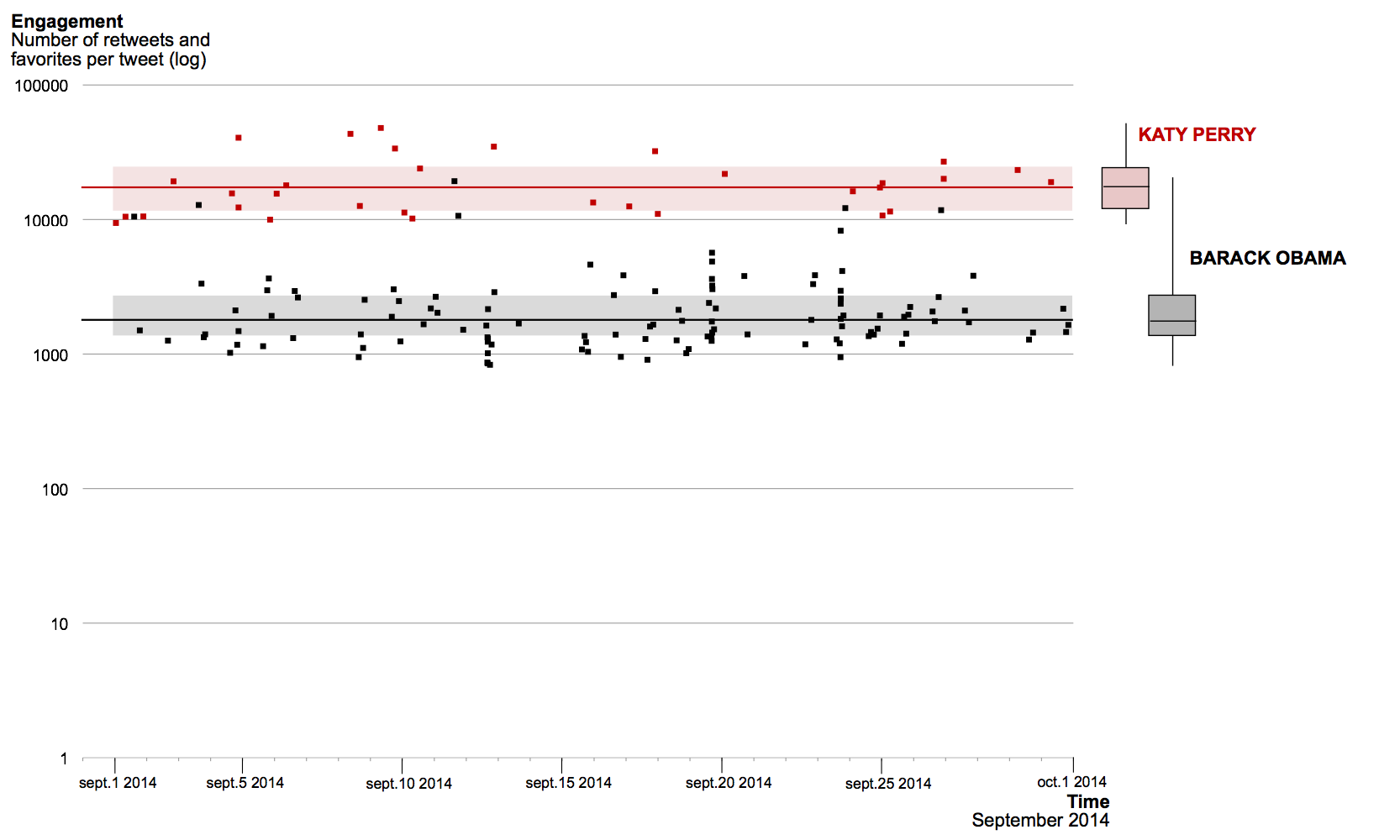
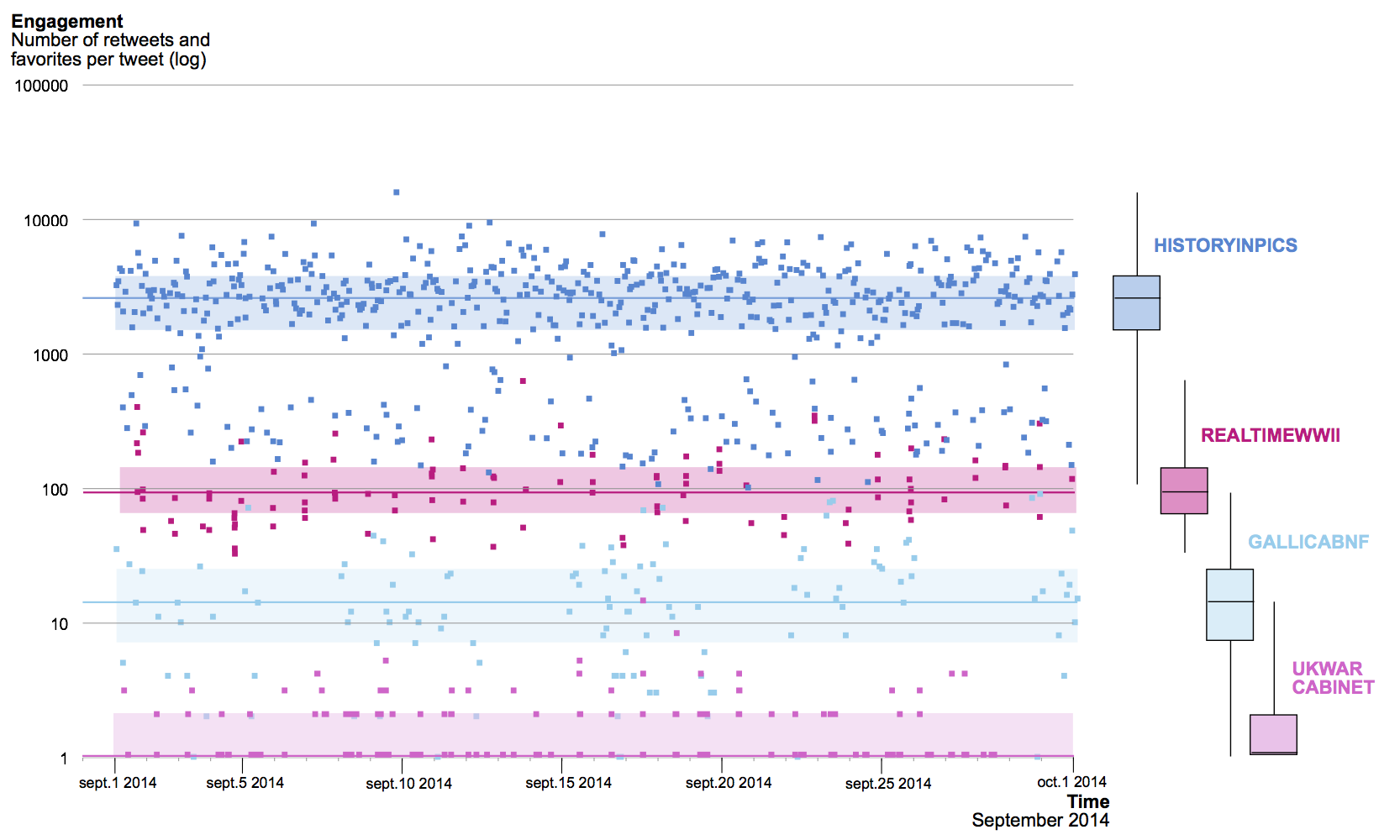
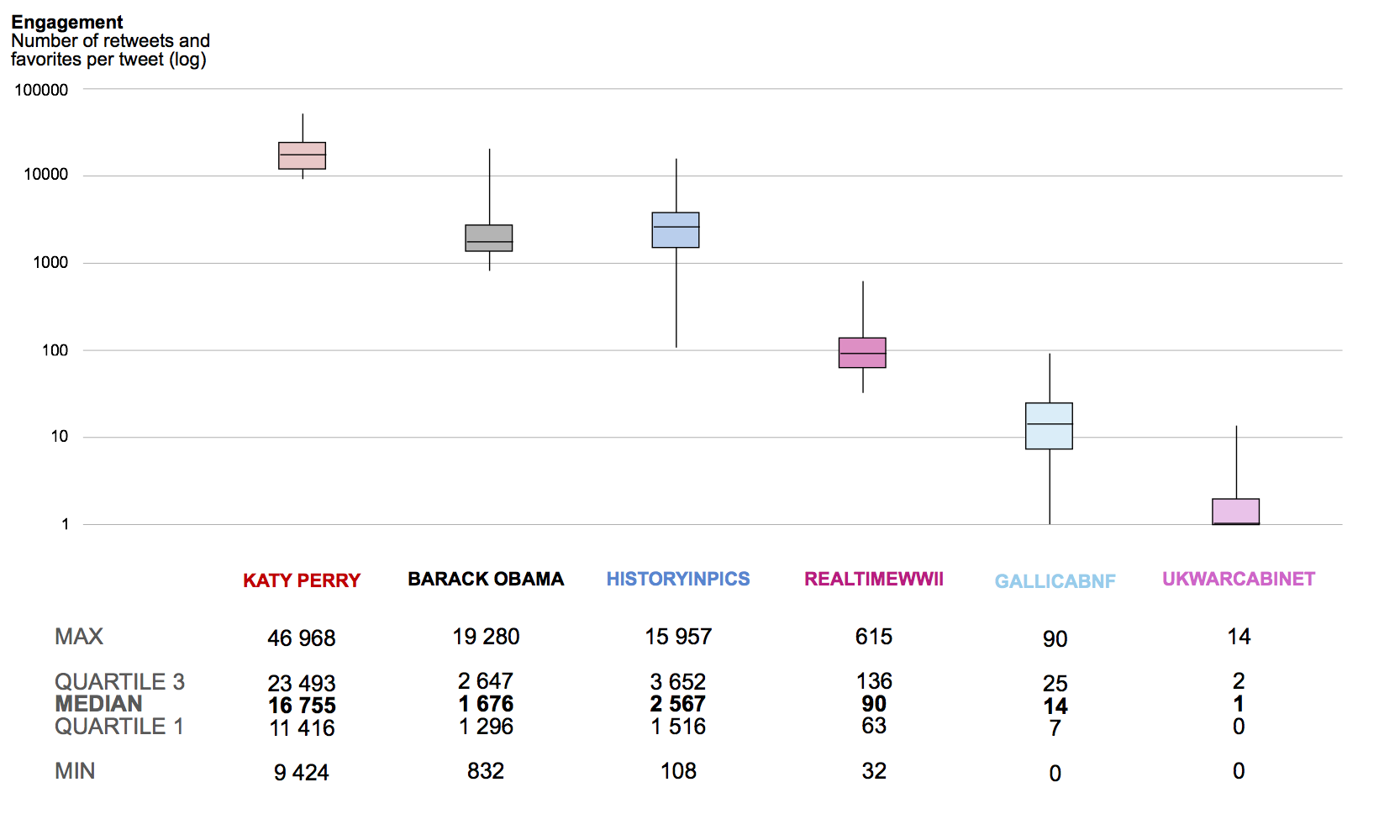

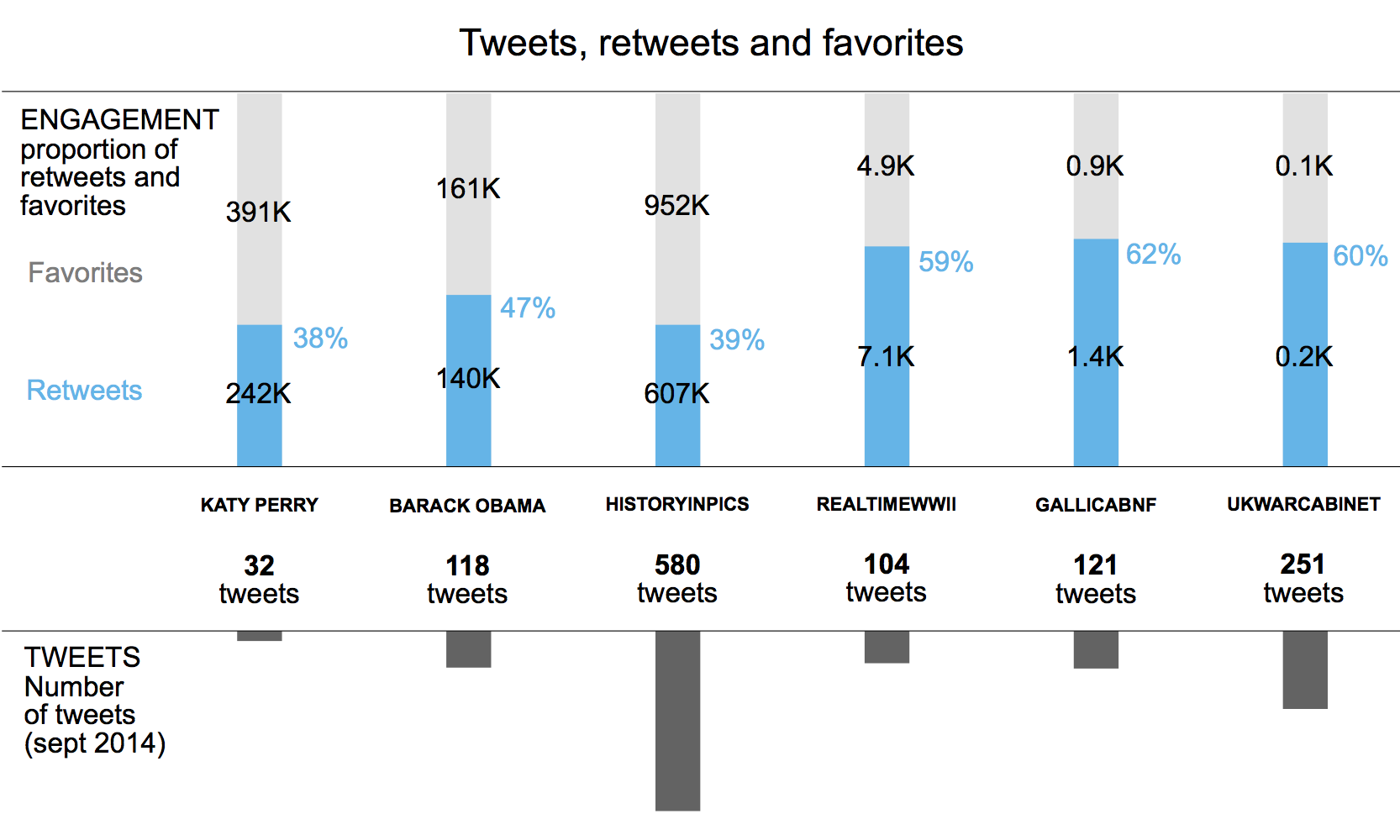
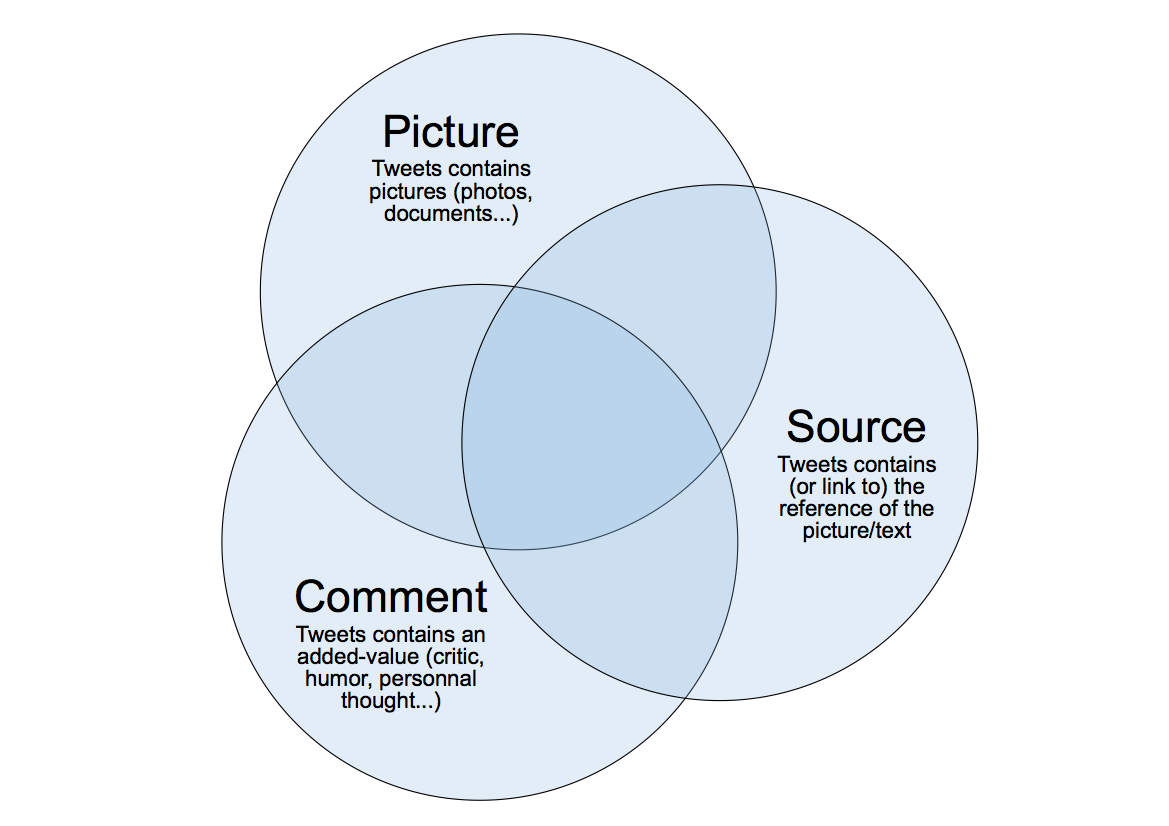
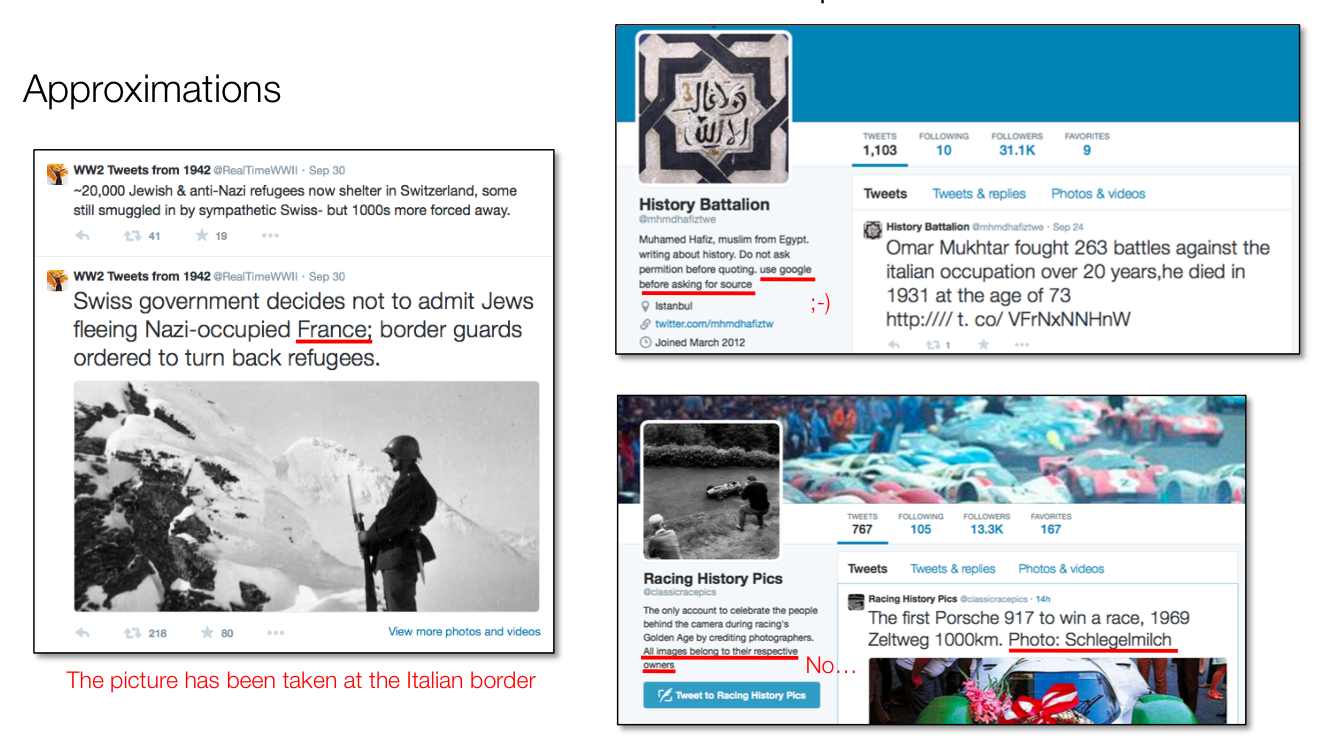
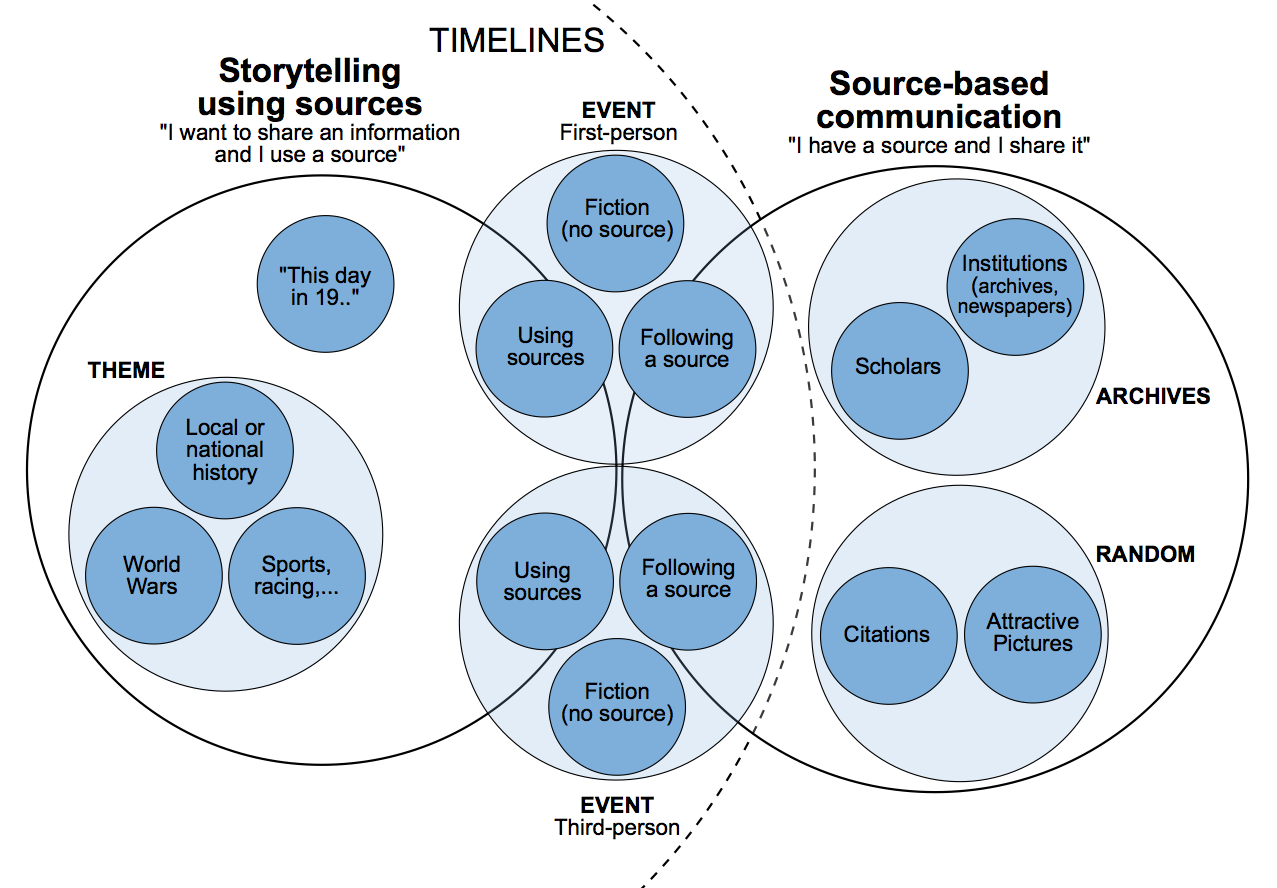
Trackbacks/Pingbacks